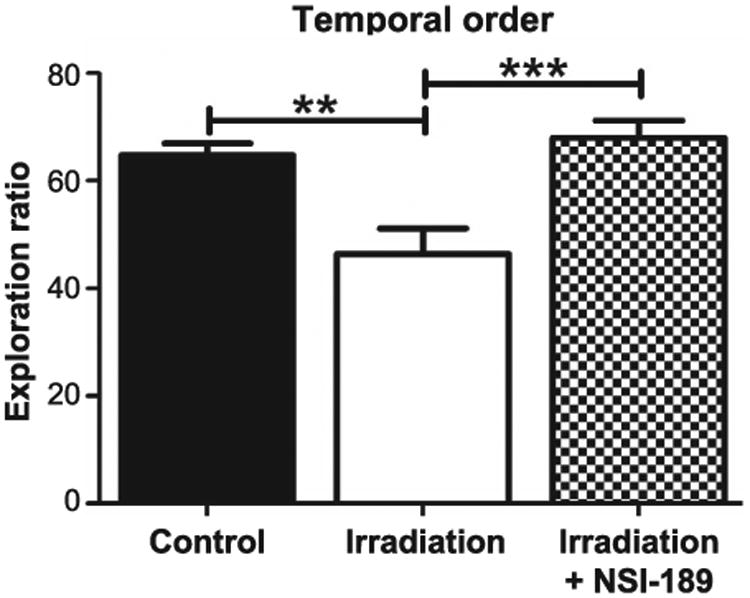Fig. 4.

Spatiotemporal episodic memory impairments measured with the temporal order task. During this task, rats were allowed to freely explore two identical objects for 5 min (phase 1). After a 4-h rest period, rats were placed back into the arena with two new identical objects and were allowed to explore for an additional 5 min (phase 2). One hour later, rats were allowed to explore one of each object they previously encountered for an additional 5 min (testing phase shown). Controls spent a significantly greater percentage of time with the phase 1 object during testing (**P < 0.01) compared to irradiated only animals. Irradiated animals treated with NSI-189 showed a significant difference (**P < 0.01) compared to irradiated only animals. Controls and irradiated animals treated with NSI-189 showed no significant difference (P > 0.05).
